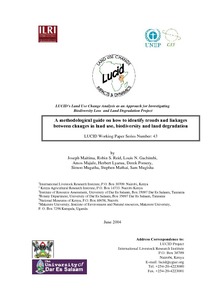Spatiotemporal mapping of the dry season vegetation response of sagebrush steppe
The vegetation dynamics of semi-arid and arid landscapes are temporally and spatially heterogeneous and subject to various disturbance regimes that act on decadal scales. Traditional field-based monitoring methods have failed to sample adequately in time and space in order to capture this heterogeneity and thus lack the spatial extent and the long-term continuous time series of data necessary to detect anomalous dynamics in landscape behavior.
Improving environmental impact assessment for better integrated coastal zone management
Cercetari privind regenerarea sub masiv si introducerea la adapostul masivului a unor specii autohtone valoroase, in arborete apropiate de exploatabilitate, de pe terenuri degradate
Researches made in the most important part of protection plantations reforested on land degradation showed that the basic species is Pinus nigra and/ or Pinus silvestris replacing some stands with Hippophae associations. This stands have a fragile structure, not so good for protection functions. Sheltered regeneration and reforestation with local valuable species represents an efficient method for increasing the stability of stands in the reforestation of land degradation. In this way the degradation process was stopped and the vegetation was reinstalled.
History of the Priest River Experiment StationPriest River Experiment Station
influence of land use on desertification processes
Site degradation occurs mainly through deterioration of the soil's capacity to capture and store water, as well as the loss of organic matter or the accumulation of salts or other toxic substances in the soil. This degradation process, leading to the reduction of the biotic potential of the site, is known as desertification. In this study, changes in bulk density, organic matter, and electrical conductivity are used as indicators of desertification in northeast Mexico.


